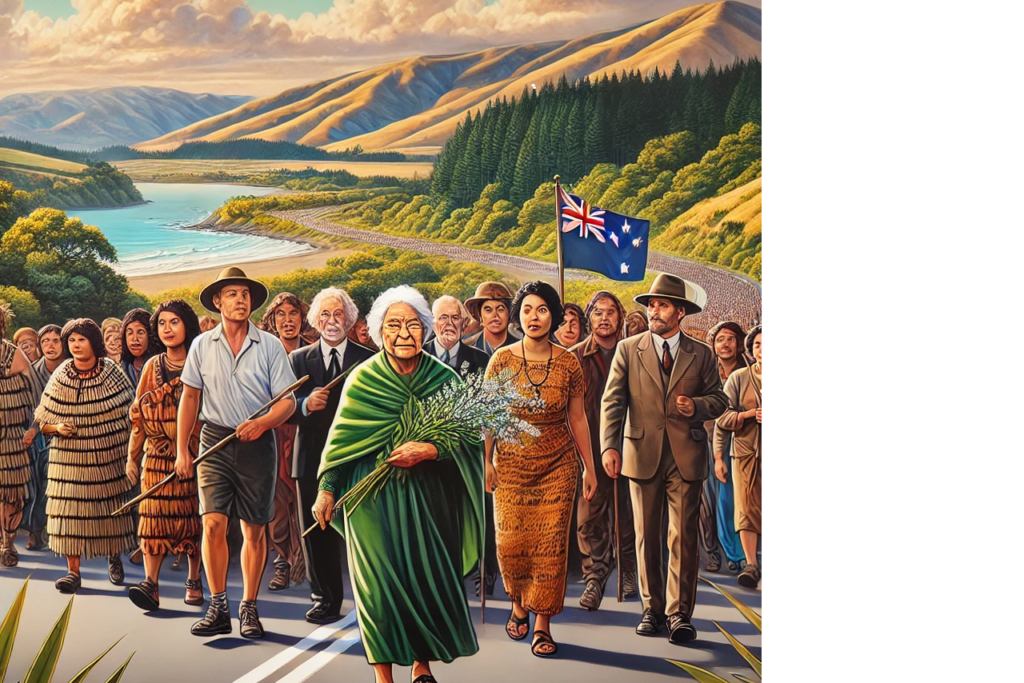What is the story behind this march? Who started it?
This will be the first of some articles to follow until the day the marchers arrive in Wellington.
With some parts of state highways totally blocked by the Hikoi march protestors heading to the NZ Parliament building for hours, the envisaged 30,000 number altogether, were making their slow but steady progress. They are to arrive on Tuesday to “protest Government policies including the Treaty principles bill introduced by Act leader David Seymour”
Background vital information to this Hikoi
- What happened?
The Hīkoi March, also known as the 1975 Land March, was a peaceful protest by the Māori people of New Zealand to stop the loss of their ancestral land. - Why was it important?
For over a century, Māori had been losing their land due to unfair laws and broken promises. By 1975, most of their land was gone, threatening their cultural and spiritual connection to it. - Who led it?
Dame Whina Cooper, a 79-year-old Māori leader and activist, inspired thousands to join her in a 1,000-kilometer march from the far north to Parliament in Wellington.
The Journey

- How did it start?
On September 14, 1975, a small group began walking from Te Hāpua, a remote settlement in the North Island. They carried a petition demanding better protection for Māori land. - What challenges did they face
– Long days of walking, often in bad weather.
– Mixed reactions from the public—some offered support, while others were less welcoming.
– Keeping their spirits high during a physically and emotionally exhausting journey. - How did it grow?
– The march gained attention as it moved south.
– Communities joined in, sharing food and stories.
By the time they reached Auckland, thousands were marching together.
Arriving at Parliament
- When did they get there?
– On October 13, 1975, the marchers arrived in Wellington after 30 days on the road. - What happened at the end?
– A crowd of about 5,000 gathered on the steps of Parliament. - Dame Whina Cooper presented a petition with 60,000 signatures to Prime Minister Bill Rowling.
– Her speech emphasized that the land was not just about ownership—it was about identity, culture, and the future of Māori children.
Why It Mattered
- What changed after the hīkoi?
– It led to the creation of the Waitangi Tribunal, a government body to investigate Māori land claims and Treaty breaches.
-It raised awareness among all New Zealanders about Māori history and the injustices they had faced.
- How does it inspire people today?
– The march became a symbol of peaceful protest and unity.
– Later movements, like the 2004 Hīkoi against the Foreshore and Seabed Act, followed its example.
Key Takeaways
- Dame Whina Cooper’s leadership proved that even one person could inspire change.
- The hīkoi wasn’t just about land—it was about dignity, culture, and hope for the future.
- It taught New Zealand the importance of listening to its people and honoring its promises.
As Dame Whina Cooper said, “Take care of our children… for how the children grow, so will be the shape of Aotearoa.”
